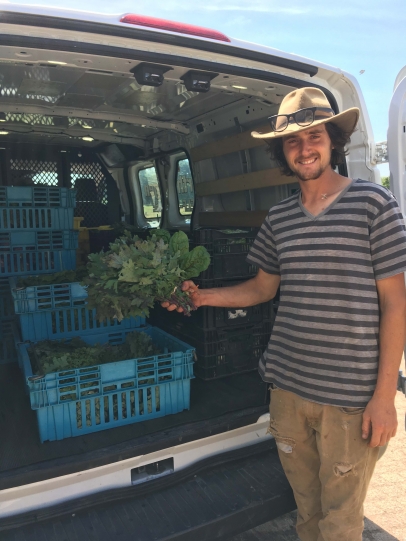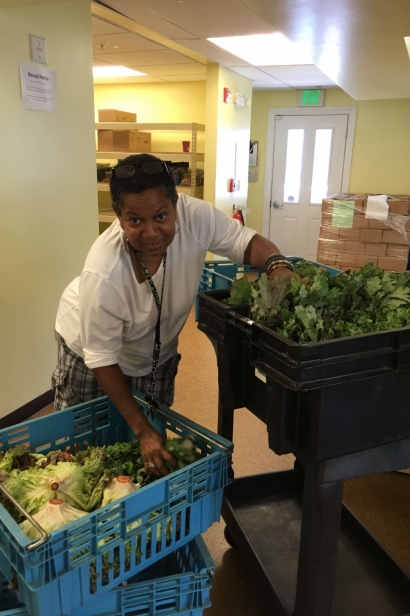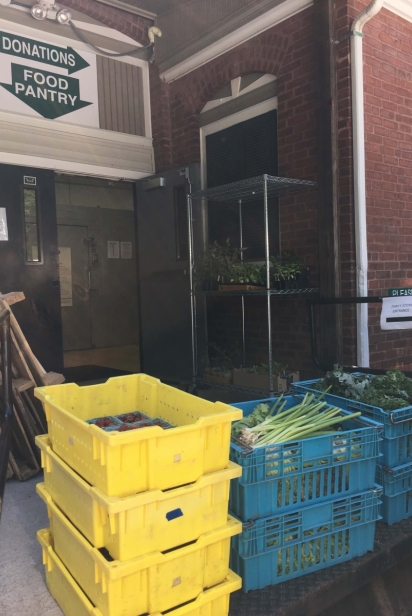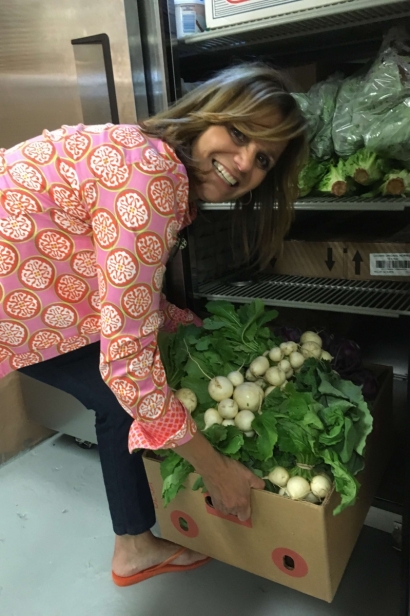Gleaning in Rhode Island: Hope’s Harvest RI Feeds the Hungry with Unused Produce from Local Farms
Food waste is a significant issue faced by many farmers across the country. It is common practice for farmers to plant around 25% more fruits and vegetables than they expect to need as a hedge against drought or severe weather or harmful pests that can damage crops. Farms might also have leftover, misshapen or bruised fruits and vegetables that do not sell. While surplus produce can be used to feed livestock, tilled back into the soil or made into compost, Hope’s Harvest RI uses the practice of gleaning to recover this food and offer it to Rhode Islanders who lack access to fresh fruits and vegetables.
Gleaning, also known as food recovery, is an age-old practice that involves collecting food that would otherwise go to waste and taking it to people in need. There are organizations across the country that practice gleaning to help the food insecure: The Society of St. Andrews, which coordinates gleaning projects across the Southeast, is one of the largest gleaning organizations in the U.S. Closer to us, the Boston Area Gleaners gleaned 635,000 pounds of fresh food from 50 farms in eastern Massachusetts last year. Hope’s Harvest, founded by Eva Agudelo in 2017, is the first such gleaning organization in Rhode Island. Hope’s Harvest practices farm-based food recovery that supplies collected produce to hunger relief organizations across the state. Agudelo says, “We want to make sure people who need fresh, healthy food can access what’s available”—food that would otherwise go to waste.
Many Rhode Island farms are eager to donate their extra produce, but doing so can incur added labor costs they cannot afford. It also takes a lot of extra planning to get the fruits and vegetables ready for drop off at food pantries in a practical way. Neither farmers nor hunger relief organizations have extra time on top of their other duties.
Having someone who has knowledge of both sides of the equation, like Agudelo, can make the process simpler. “The people [in Rhode Island] who were interested in gleaning were doing it as a side project because they were either farmers or they were running [food] pantries. But gleaning at the statewide level requires consistency,” she says. “It requires a point person who can be dependable, who can show up when the farmers need them to show up and who does not have too many other competing priorities.”
Hope’s Harvest makes it easier for farms to give their extra produce to people in need by having dedicated volunteers do much of the labor—with Agudelo doing all of the coordinating.
The owner of Earth Care Farm, Jayne Merner Senecal, says about working with Hope’s Harvest, “We had a great experience working with Hope’s Harvest RI to glean the strawberries and rhubarb from our farm in Charlestown. When we had a bumper crop it had been a challenge to spend the extra time and money to harvest, wash and deliver that produce to the food pantries. Although we wanted to, sometimes we couldn’t carve out the time and resources. It’s wonderful to have someone who is organizing volunteers to harvest, wash and deliver the produce. I can bet much more health-giving produce will end up getting to people who need it rather than being tilled under.”
Hope’s Harvest works with small- and large-scale farms throughout the state, most of which are organic. The nonprofit relies heavily on volunteers to do the harvesting at gleaning events throughout the growing season. Volunteers harvest food they know will be used to feed the hungry, so it is a very tangible and meaningful way to get involved in philanthropic work.
Agudelo suggests that volunteers with little knowledge of the farming industry will learn more about farming through their experience gleaning, including the daily challenges often faced by farmers. They can also learn why many farms that wish to donate their food can’t afford the time or the funds to do so.
Agudelo says that volunteering with Hope’s Harvest “is a great opportunity to teach people about food systems and [for volunteers] to gain some insight about what it’s like to be a farmer. Volunteers can connect with the land, but also understand food insecurity and the scale and the scope of the need for having access to fresh foods.” Hope’s Harvest has found one solution to food insecurity and food waste in Rhode Island by supplying leftover and surplus fresh fruits and vegetables to people in need.
For more information on how you can get involved, visit HopesHarvest.org.
By signing up as a volunteer you will be updated on gleaning projects throughout the growing season. If you’d prefer not to get your hands dirty but would still like to support the mission of Hope’s Harvest RI, donations can be made online at HopesHarvest.org.
Photos Courtesy of Hope’s Harvest RI









